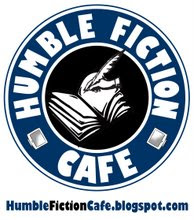 Last September, hurricane Ike, the third most destructive storm to make landfall in U.S. history, devoured Galveston Island. Ike’s twelve-foot storm surge raised the iron-hulled sailing ship Elissa, moored at pier 21 on the northwest side of the island, nearly level with the concrete sidewalk that leads to her visitor’s center. One-hundred-and-ten mph winds tore at her for twelve hours but never managed to find a grip on her lines or mast. However, one of her most important sails, the fore lower topsail (ironically referred to as the “storm sail”), was shredded like a formal dress shirt ripped apart by a pack of snarling wild dogs.
Last September, hurricane Ike, the third most destructive storm to make landfall in U.S. history, devoured Galveston Island. Ike’s twelve-foot storm surge raised the iron-hulled sailing ship Elissa, moored at pier 21 on the northwest side of the island, nearly level with the concrete sidewalk that leads to her visitor’s center. One-hundred-and-ten mph winds tore at her for twelve hours but never managed to find a grip on her lines or mast. However, one of her most important sails, the fore lower topsail (ironically referred to as the “storm sail”), was shredded like a formal dress shirt ripped apart by a pack of snarling wild dogs.
Nearly five months later, sail maker Jim Brink has traveled from San Diego to Galveston to create a new storm sail for Elissa. Since there is no available building large enough to act as a sail loft in Galveston, this skilled craftsman, who has designed and constructed sails for movies such as Pirates of the Caribbean, is using the grand ballroom of the Ashton Villa, a historic 1859 residence, to spread out the required 630 square feet of sailcloth.
I have to admit, after all the research I did on Elissa’s history for my novel Good Hope, including walking her decks and interviewing her crew, it never occurred to me that there are only six people in the nation with the skills necessary to refit her sails. That’s right-six. Skills that were once considered essential to our seafaring heritage are now almost lost to antiquity.
So what does this have to do with writing?, you ask.
Let me tie it in for you.
Recently, a friend and fellow member of the Humble Fiction Café sold a short story. All of the members of the HFC feel a sense of kinship when someone makes a sale because many of us contribute to the early development of these stories with suggestions, critiques, and editing. So we were somewhat surprised when the publisher returned the story with some proposed corrections for “grammatical and punctuation errors.” Now here’s the rub. Not only were the suggested corrections wrong, the publisher’s letter proposing the changes contained punctuation and grammar flaws. Any English major could see it.
Now don’t get me wrong, most of the HFC members are not qualified, professional editors-but the writer who submitted the story is. She is an editor for a local Houston magazine and has seventeen years experience in the industry. We sometimes refer to her as the “Comma Queen” for her ability to turn our drafts into red-streaked pages that look like they came from the floor of a Victorian barber shop.
Our author was ready to pull her submission if the publisher insisted on printing it with their changes. She prevailed, and I’m glad to say that everything turned out for the best, but the incident makes me wonder about the current literary culture and the vanishing trade of the copy-editor.
Right now in Japan, the largest growing market for literature is called the “cell phone novel.” These stories are not only read on cell phones, they are written on cell phones, and mostly by amateurs who use text shortcuts and questionable grammar. Even with glaring flaws that traditional publishers would reject after reading the first paragraph, the demand for cell phone novels is booming. Granted-they’re free, so there isn’t a huge demand for them to contain expertly polished prose, but consider this: three of 2007’s top five bestselling Japanese novels were written on cell phones.
The closest thing America has to this type of market is fan fiction, and while it still carries the stigma of being written by hacks and amateurs, the number of Harry Potter inspired stories at Fanfiction.net is nearly 400,000, and the demand continues. I won’t even speculate on how long it will take for Twilight-inspired fan fiction to surpass that total -okay, maybe fifteen minutes, but again, most of these free-to-read short stories, novels, and novellas are full of punctuation, grammatical, and stylistic errors.
So how are publishing companies responding to this trend?
They are laying off editors by the hundreds.
After all, if the public is willing to pay for novels that editors at publishing companies previously rejected, like the current bestseller Still Alice, then why retain those services? I’m sure Still Alice contains easy to read sentences and is relatively free of punctuation errors, but the point is, author Lisa Genova had to edit the novel herself. Or, in much the same way that Jim Brink was hired to shape the sails of Elissa, maybe Ms. Genova hired a free-lance editor to help shape the prose of her manuscript.
Fast-forward.
Imagine a celebrated fiction writer in the year 2150 who desires to create a late twentieth century hardbound copy of his current masterpiece-just for nostalgia. The plot, characters and story may be novel for the time, as the word implies, but where will he find someone with the skills to make his prose flow from the pages like a refreshing stream? Who will help edit the text so his readers won’t be yanked out of his beautifully created world by jarring sentence constructions and gross misspellings? And how many practitioners of that ancient skill will be left in the world? Twenty? A dozen? Six?
I’m afraid it will be a lost art by then. My editor friend and those like her may become tomorrow’s sail makers.
I only hope somewhere in that rapidly approaching future, the Elissa will still be sailing, and when someone in the Galveston Historical Foundation gift shop hands visitors a copy of my book, it won’t be titled Gud Hop.
Monday, March 2, 2009
The Lost Art of the Sail Makers
Labels:
Editing,
Elissa,
Galveston,
Good Hope,
Jim Brink,
Lisa Genova,
Sail Making,
Still Alice
Subscribe to:
Post Comments (Atom)








1 comment:
My friend read this post and was kind enough to send along a copy-edited version. There were a few suggested corrections and the post has been updated with her changes.
The comma queen reings suppreme!
Post a Comment